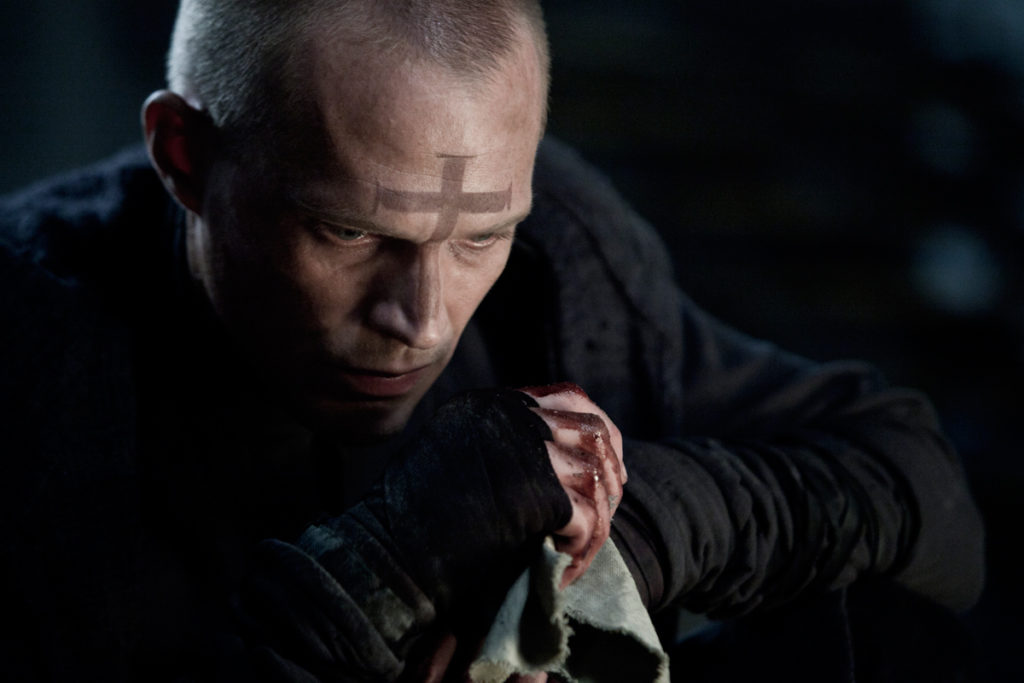Priest
Vampire exorcist
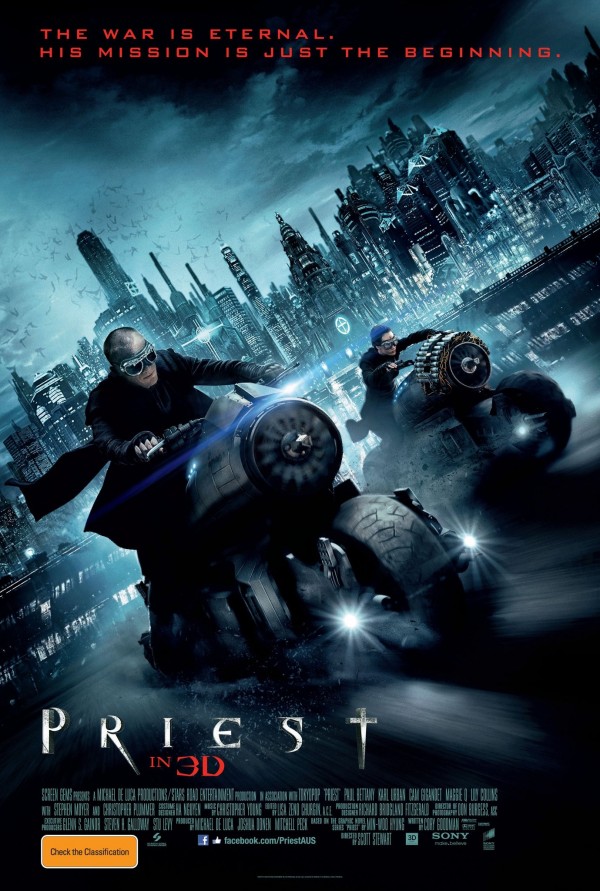
Since cinema was invented, religious themes or elements relating to religion has been used in the most diverse ways, especially in the horror genre, where the supernatural reigns, and is used for scaring audience. Therefore, it is odd how the theme was used in the film “Priest” (USA, 2011), from the sub-genre post-apocalyptic societies, with a great deal of creativity.
Since men were able to organize themselves socially and conceive about gods, soon followed the religions and their corporate achievements. Throughout Humanity’s history, religious ideas were used for the most diverse purposes, including wars – what still happens today.
Different religious appeals served as an excuse for the most absurd atrocities, the most notable being the Inquisition, a movement created by the Catholic Church on behalf of the Albingenses in France, and which killed and tortured thousands of people over the centuries. To a lesser extent, the ISIS has done the same thing in the territories it has occupied.
Unfortunately, in all cultures we find tragic examples resulting from one person’s opinion prevailing over others. In cinema, however, when showing films of exorcism, religious corruption, or another more controversial theme, it is always shown in a Catholic environment because it is a minority in the United States, with only 15% of the population.
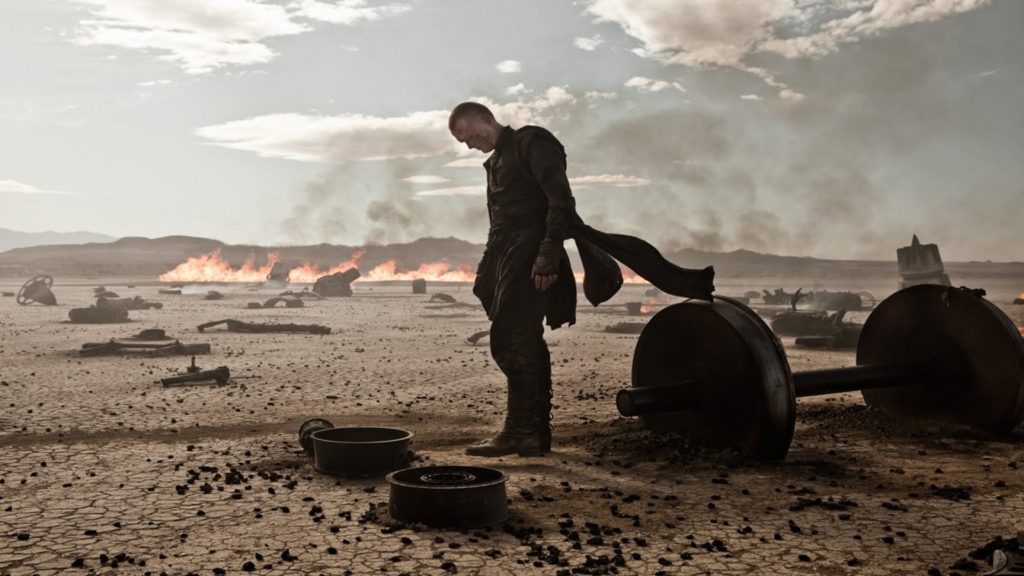
All this preamble serves to explain the environment of “Priest”, in a world like ours, which would have since the beginning of time a deadly confrontation between men and vampires, beastly beings, devoid of eyes, who cannot expose themselves to the sun, and devour and drink human blood.
Since the beginning, the fight is led by the Church, who leads the armies in an unequal fight, only counterbalanced by the increasing use of weapons of mass destruction, which eliminate vampires but causes the destruction of the planet itself.
War is only decided when the Church creates a new type of soldier, the Priests, highly trained warriors, who do not use firearms, but manage to destroy a large number of vampires.
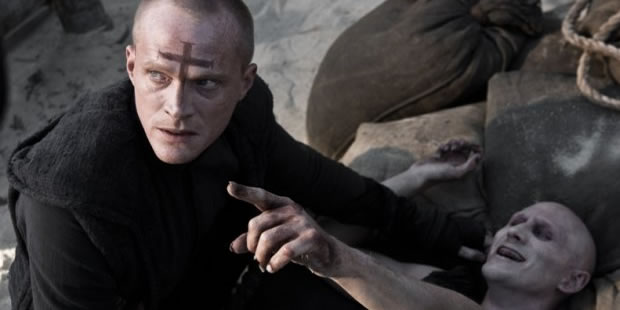
After defeat, the remaining vampires are confined to reservations, while the humans gather in Church-controlled cities, as the rest of the planet is reduced to an inhospitable desert.
In this post-apocalyptic world, we find the Priests, the heroes responsible for the victory, stripped of their functions and relegated to menial jobs, reserved for the unqualified. Cities are dominated by religious corporations, which control the inhabitants with moralizing messages, while pollution from old-fashioned coal-fired machines turns the country into a sterile black and white landscape.
On the frontier, in the middle of the desert, there are other men trying to rebuild the world. One of them is Owen Pace (Stephen Moyer), who lives with his wife, Shannon (Mädchen Amick) and daughter, Lucy (Lily Collins), on a farm in the middle of nowhere.
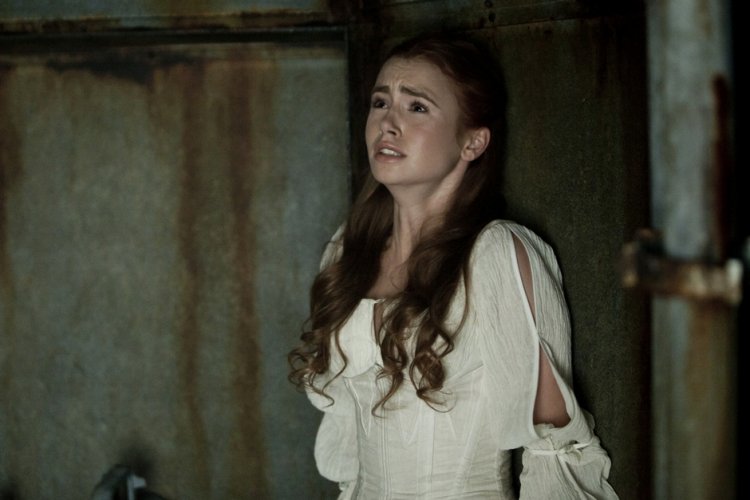
One night, the farm is invaded by monstrous beings. Although defend bravely, Owen is left seriously injured by the side of his dead wife, while the daughter is kidnapped by the attackers.
The crime leads local sheriff Hicks (Cam Gigandet) to go into town to ask Priest Pace (Paul Betanny), Owen’s brother, for help. Hicks asserts that Lucy was taken by vampires, and that Owen knew that Lucy’s only chance of survival lay in the warrior-priest’s hands.
But, although the Priest seeks permission from his superiors, he is strictly forbidden to leave by the powerful Monsignor Orelas (Christopher Plummer), who refuses to admit the possibility that there are vampires on the loose.
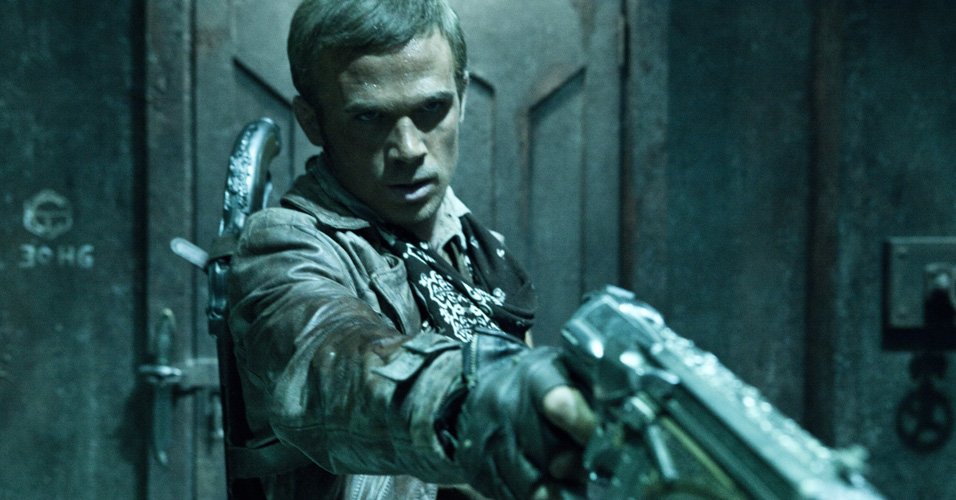
Determined, the priest leaves for the desert, with the help of Hicks, to try to rescue his niece, while Orelas sends other priests to capture him, alive or dead.
The mystery surrounding the strange and new vampires is linked to a fact from the Priest’s past, and he will discover that his powerful new enemy, the Black Hat (Karl Urban), is the key to everything that is happening now, and which could mean the end of the human species on Earth.
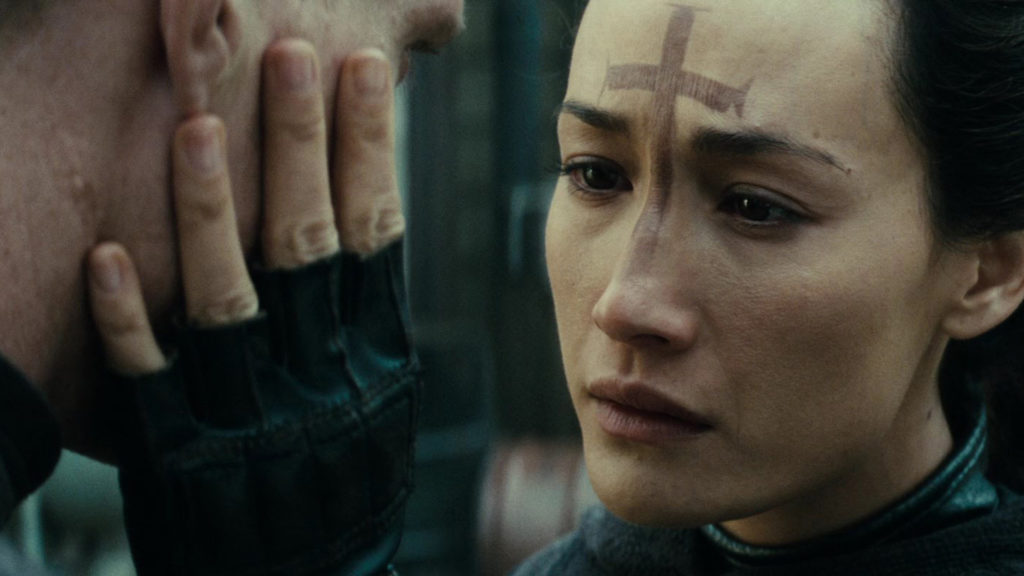
Although it resembles video game characters, “Priest” is based on a comic book (manhwa) created by Korean author Hyung Min-Woo, who was the first in his country of the action/horror style. Manhwa is a Korean word for comic books, illustrations and animations. Outside Korea, the term specifically refers to South Korean comic books.
In the original story Ivan Isaacs, a promising priest, eventually freed a fallen angel named Temozarela from his prison of hundreds of years, thus causing his death and the death of his beloved, Gena. Once dead, he was granted a second chance at life and revenge, a gift from the demon Belial, who in exchange for power, becomes the possessor of half of his soul. Ivan Isaacs follows his path of revenge, eliminating other Fallen Angels, followers of Temozarela.
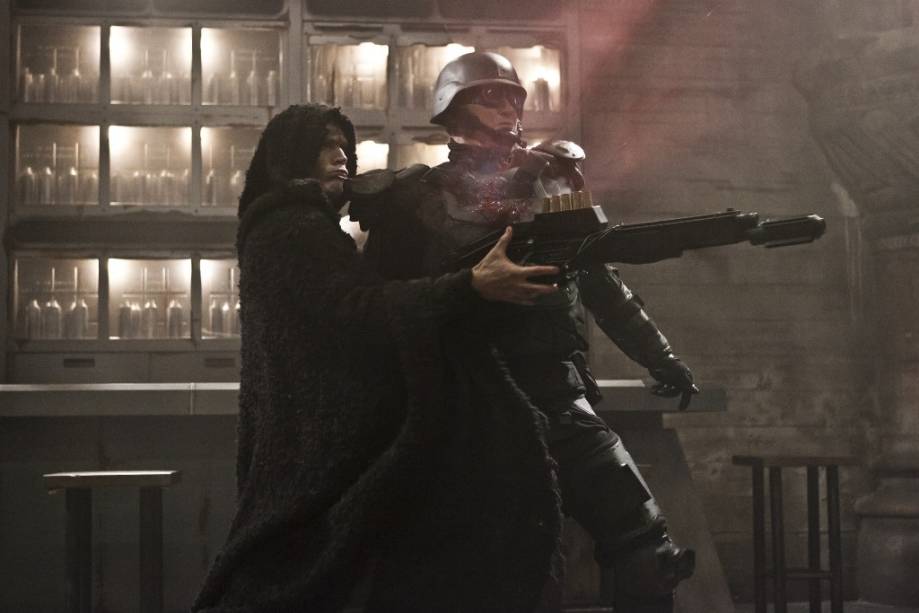
Despite the title, there is no supernatural aspect to the story , such as demons or angels, and the vampires themselves are just monsters that kill and die. The Church is portrayed as a bureaucratic and corrupt organization struggling to maintain power over the survivors of war.
The ambiance and the special effects are very good, and the production was able to unite the atmospheres of spaghetti westerns and horror hardcore with touches of fantasy of kung-fu movies that enchanted the audiences in the 70’s.
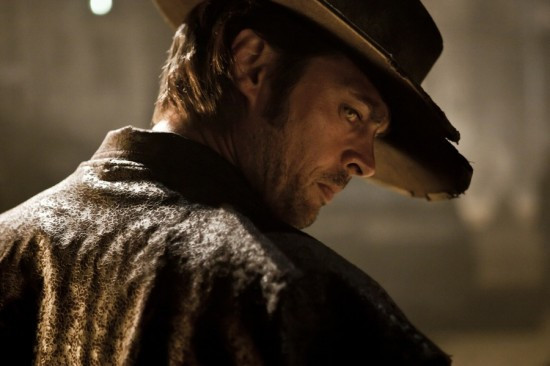
The cast plays very well, especially Paul Betanny, who proves to be one of the best actors of his generation. It is worth highlighting the magnificent presence of Christopher Plummer, who, at the age of eighty, still brings the charm that enchanted crowds like the heartthrob of “The Sound of Music” (USA, 1965).
“Priest” is an unpretentious action film, with many “poetic freedoms”, and aimed at a young audience, avid consumer of this kind of production.

